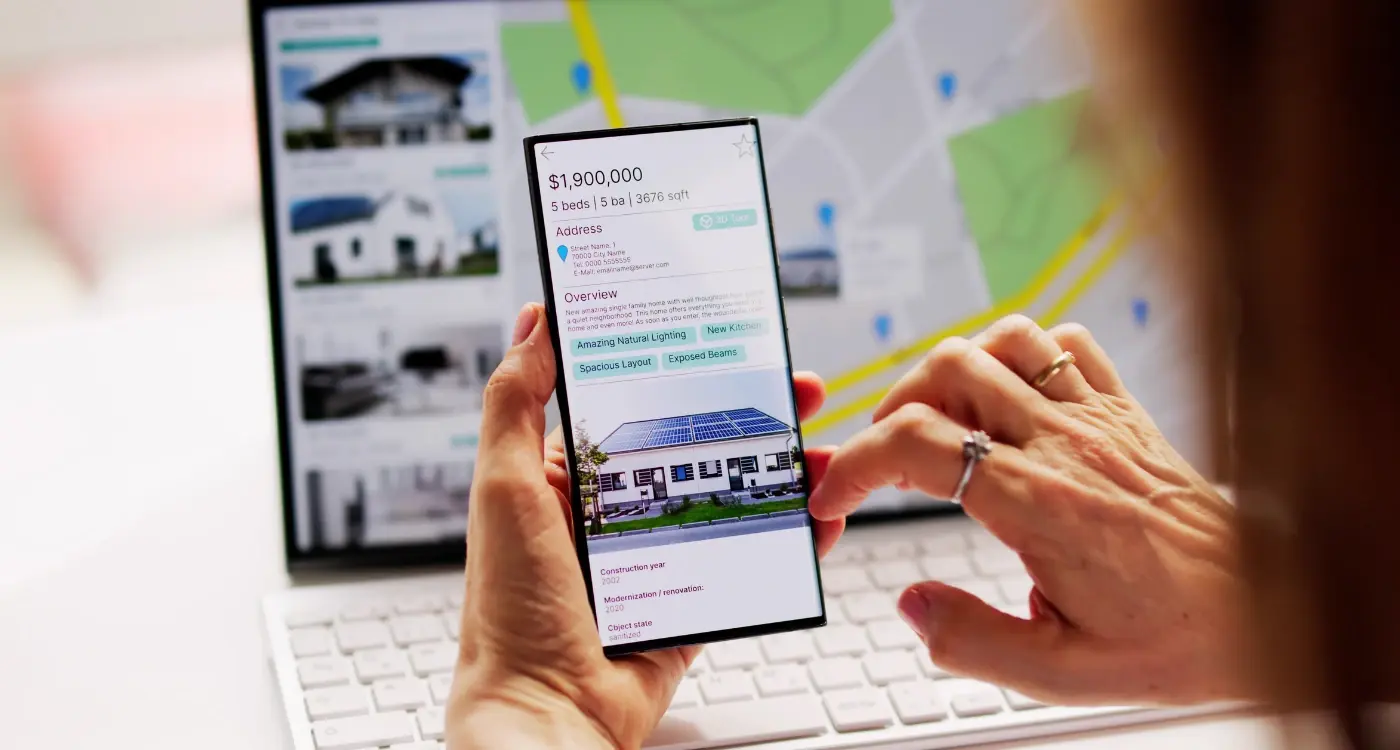Why Do Established Brands Fail at Mobile App Design?
You know what's mad? Some of the world's biggest brands—companies that have mastered marketing across every other channel—completely fall apart when it comes to mobile app design. I'm talking about household names with billion-pound budgets who somehow manage to create apps that feel like they were designed by committee and built by people who've never actually used a mobile phone.
I've worked with enough established brands over the years to spot the patterns. These companies can create compelling TV adverts, beautiful print campaigns, and websites that convert like crazy. But when it comes to their brand apps, something goes terribly wrong. The result? Apps that users download once, maybe twice, then delete faster than you can say "user retention".
It's not about lack of resources—these brands have more money and talent than most startups could ever dream of. It's not about technical limitations either; enterprise apps can be just as sophisticated as anything built by Silicon Valley darlings. The problem runs much deeper than that.
The same brand strategy that works brilliantly on billboards often becomes the kiss of death in mobile app design
Here's the thing—mobile apps aren't just another marketing channel where you can apply the same old brand playbook. They're intimate, personal tools that live on people's most private device. They need to earn their place on that home screen every single day. Yet somehow, established brands keep approaching mobile app design like it's a digital brochure with buttons. And then they wonder why their brand apps struggle to compete with nimble startups who understand what mobile users actually want.
The Big Brand Trap
Here's what I see time and time again—big brands waltz into mobile app development thinking their brand recognition will carry them through. They assume that because millions of people know their logo, those same people will automatically download and love their app. It's a trap I've watched countless household names fall into, and honestly? It's painful to witness.
The truth is, your brand's success in traditional marketing doesn't mean squat when it comes to mobile apps. Users don't care if you've got the most recognisable logo in the world if your app takes forever to load or crashes when they're trying to complete a purchase. I mean, think about it—when did you last keep a rubbish app on your phone just because you liked the company?
What happens is these established brands get so caught up in maintaining their "brand identity" that they forget apps need to solve actual problems. They spend months arguing about whether the shade of blue matches their corporate guidelines while completely ignoring the fact that their checkout process has seventeen steps. It's mental, really.
Brand Recognition vs User Experience
I've worked with brands that insisted on cramming their entire product catalogue into the app because "that's what our website does." But mobile users think differently—they want quick, focused interactions. They might love your brand, but if your app doesn't make their life easier, they'll delete it faster than you can say "brand loyalty." The app store is littered with big-name brands that thought their reputation would save them from basic usability principles.
Disconnected Decision Makers
You know what's fascinating? I've sat in boardrooms where the person signing off on a £200,000 mobile app project hasn't actually used their phone for anything beyond calls and emails. It's a bit mad really—but this disconnect between decision makers and actual app users is one of the biggest reasons why brand apps fail spectacularly.
The problem starts at the top. Senior executives making app decisions often have completely different priorities than the people who'll actually download and use the thing. They're thinking about brand perception, corporate messaging, and how the app reflects on the company's image. Meanwhile, users just want something that works quickly and solves their problem without fuss.
I've seen this play out countless times. The marketing director wants the app to showcase every single product the company makes; the brand manager insists on lengthy introductory videos that can't be skipped; the legal team demands terms and conditions that nobody will read. Each department adds their requirements without considering how it affects the user experience.
The Chain of Command Problem
Here's the thing—by the time user feedback reaches the decision makers, its been filtered through multiple layers of management. Each person in that chain waters down the message or adds their own spin. What starts as "users find the checkout process confusing" becomes "users would like more payment options" by the time it reaches the boardroom.
Get your decision makers to actually use the app regularly. Set up monthly sessions where executives complete real user journeys on the app—not guided tours, but actual tasks they need to figure out themselves.
The most successful brand apps I've worked on had senior stakeholders who were genuinely curious about user behaviour. They asked questions, tested prototypes themselves, and weren't afraid to admit when something didn't make sense. That level of engagement from the top makes all the difference.
Here's where things get properly messy. Big companies have processes for everything—procurement, approval workflows, compliance checks, legal reviews. And sure, some of this stuff is necessary when you're dealing with millions of pounds and thousands of employees. But when these processes collide with mobile app development? It's like watching a freight train hit a sports car.
I've sat through meetings where we spent three weeks debating the colour of a button while users were abandoning the app because it took twelve seconds to load. The corporate process says "we need sign-off from brand, legal, compliance, and the regional directors." Meanwhile, users are thinking "this app is rubbish" and deleting it within 30 seconds of opening it.
When Committees Meet User Experience
Mobile users don't care about your internal approval process. They don't know that your legal team needs two weeks to review every piece of copy or that your brand guidelines were written before smartphones existed. They just know your app feels clunky compared to the one they used five minutes ago—and they're not wrong to think that.
The worst part? These processes often prioritise the wrong metrics entirely. I've seen companies obsess over whether their app follows every single brand guideline whilst completely ignoring basic usability principles. Users can't complete simple tasks, but at least the corporate colours are consistent across every screen!
Speed Kills (Slow Speed, That Is)
In mobile, speed isn't just about technical performance—it's about decision-making speed too. While established brands are running everything through committees and approval chains, smaller competitors are testing, learning, and improving their apps weekly. By the time the big company's "perfect" feature gets approved, users have already found better solutions elsewhere. The corporate need for certainty often conflicts directly with what users actually want: apps that work well and get better over time.
Brand Guidelines That Kill Apps
I've seen it countless times—brilliant brand apps that get strangled by their own brand guidelines. Companies spend months perfecting their brand identity, then force their mobile app to follow rules that were never designed for touchscreens.
Here's the problem: brand guidelines are usually created for print, web, and marketing materials. They specify exact colours, fonts, and layouts that look perfect on a billboard or brochure. But mobile screens? That's a different beast entirely.
Take font sizes, for instance. Your brand might specify a beautiful 12pt serif font that looks elegant on letterheads. On a mobile screen, especially for older users or anyone with vision issues, it becomes completely unreadable. I've watched companies argue for hours about changing their brand font from 12pt to 16pt, as if those four points would destroy decades of brand equity.
When Brand Colours Don't Work on Mobile
Colour schemes cause even more headaches. Brand colours often look terrible on small screens or become accessibility nightmares. Light grey text on white backgrounds might look sophisticated in print, but it fails every accessibility test when you put it in an app.
The brand police will fight tooth and nail to keep their exact shade of blue, even when user testing shows people can't actually see the buttons properly
The solution? Create mobile-specific brand guidelines. Keep the essence of your brand—its personality, voice, and core visual elements—but adapt the technical specifications for mobile use. Your users' ability to actually use your app is more important than maintaining pixel-perfect brand consistency across every possible medium.
Budget Battles and Feature Creep
Here's where things get properly messy. I've sat in boardrooms where executives argue for hours about spending an extra £5,000 on user research, then casually approve adding seventeen new features that will cost ten times that amount. It's a bit mad really—the same companies that scrutinise every penny will throw money at features nobody asked for.
The budget battles typically start early in the project. Marketing wants social sharing, sales demands lead capture, customer service needs chat functionality, and the CEO saw something cool on their competitor's app last week. Before you know it, your simple, focused app has turned into a Swiss Army knife that does everything poorly instead of doing one thing brilliantly.
The Real Cost of Feature Creep
Feature creep doesn't just bloat your budget—it destroys user experience. Every additional feature means more development time, more testing, more potential points of failure. I've watched apps with 20+ features launch to lukewarm reception whilst simpler competitors with 3 core features dominate the market.
The worst part? Once features are approved and budgeted, removing them becomes almost impossible. Nobody wants to admit their pet feature isn't working, so you end up with apps that feel cluttered and confusing.
- Development costs increase exponentially, not linearly
- Testing becomes more complex and time-consuming
- User onboarding gets complicated with too many options
- App performance suffers under the weight of unused features
- Maintenance costs skyrocket with each additional component
The solution isn't to cut budgets—it's to be ruthless about priorities. Start with your core user journey and add features only when you can prove they're needed. Your users (and your bank account) will thank you for it.
Committee Design Syndrome
You know what kills more good app ideas than anything else? Too many voices in the room. I've sat through countless meetings where fifteen people are debating whether a button should be blue or green, while the actual user experience gets completely ignored. Its madness, honestly.
Committee design syndrome happens when brands try to make every decision by committee. Marketing wants the app to showcase every product feature. Legal needs three different disclaimers on each screen. The CEO's nephew thinks it should look more like TikTok. And somehow, the person who actually understands mobile app design—if there even is one in the room—gets completely drowned out.
I worked with a major retail brand that had eight different departments all wanting input on their mobile app design. Each department had their own priorities, their own metrics, and their own idea of what success looked like. The result? An app that tried to please everyone but delighted no one. Users couldn't find what they needed because every screen was cluttered with competing priorities.
Appoint one decision maker for your app project—someone who understands both the business goals and user needs. Give them the authority to make final calls on design decisions. Committees can provide input, but one person needs to own the vision.
The Real Cost of Design by Committee
When too many people have equal say in mobile app design decisions, you get:
- Confusing navigation that serves internal politics rather than user needs
- Cluttered interfaces trying to accommodate every department's requests
- Endless revision cycles that delay launch and increase costs
- Compromised user experience that satisfies no one
- Brand apps that feel disconnected from what users actually want
The best enterprise apps I've worked on had clear leadership from day one. One person made the tough calls, said no to competing demands, and kept the focus on creating something users would actually want to use. That's how you avoid committee design syndrome.
Risk Aversion Paralysis
Here's where things get really frustrating—big brands are so terrified of making mistakes that they end up making the biggest mistake of all: doing nothing bold or different. I've seen companies spend months debating whether a button should be blue or green, when their real problem is that nobody wants to press any button in their app at all!
Risk aversion in large organisations creates this weird paradox. The more successful a company becomes, the more scared they get of trying anything that might fail. But mobile apps? They require experimentation. They need you to test things, break things, and learn from your users' actual behaviour—not what some focus group said they might possibly do in a hypothetical situation.
The Committee of Fear
I've worked with brands where every design decision had to go through legal, brand, marketing, IT, and sometimes even the CEO. By the time everyone's signed off on a "safe" design, you've got something so bland and generic that it looks like every other corporate app out there. Users can smell that fear from a mile away, and it doesn't exactly inspire confidence or excitement.
The most successful apps I've built for established brands happened when someone senior had the courage to say "let's try this and see what happens." Not "let's form a committee to assess the potential brand implications of this minor UI change."
- Set clear success metrics before you start—then trust them
- Give your team permission to fail small and learn fast
- Remember that your biggest risk is being forgettable, not being bold
- Test controversial ideas with real users, not internal stakeholders
- Accept that some features will fail—that's how you find the ones that work
Your brand didn't get where it is by playing it safe in every other area of your business. Why start now with mobile?
Protecting Your Brand Reputation
Here's the thing that keeps brand managers up at night—what if our app damages our reputation? I get it, I really do. When you've spent decades building a trusted brand, the thought of releasing something subpar feels genuinely terrifying. But here's what I've learned from working with big brands; this fear often becomes a self-fulfilling prophecy.
The irony is mad really. Companies become so focused on protecting their reputation that they end up creating exactly the kind of bland, forgettable apps that actually harm their brand. Users don't remember safe apps. They remember apps that either delighted them or frustrated them—there's no middle ground in the app store.
A mediocre app that plays it safe will damage your brand more than a bold app with a few rough edges
I've seen this pattern countless times. The legal team wants disclaimers everywhere. Marketing insists on cramming every possible message into the onboarding. Customer service demands seventeen different contact options on every screen. Before you know it, you've got an app that looks like a corporate committee designed it—which, let's be honest, they probably did.
The Real Reputation Risk
The biggest threat to your brand reputation isn't launching an app with minor imperfections; it's launching an app that makes users think "this feels nothing like the brand I know and love." When your digital experience doesn't match your brand promise, that's when people start questioning whether they really know your company at all. And that's far more damaging than any bug report or negative review.
Smart brands understand that reputation protection means creating experiences people actually want to use—not just experiences that tick every compliance box.
After building apps for established brands for years, I've seen the same patterns repeat themselves over and over again. The irony is that these companies have all the resources they need to create fantastic mobile experiences—they just get in their own way. It's honestly a bit mad when you think about it.
The brands that succeed are the ones that recognise mobile apps aren't just another marketing channel or a digital version of their existing business. They're a completely different medium that requires different thinking, different processes, and yes, different ways of making decisions. You can't design an app the same way you'd design a billboard or even a website.
I've watched Fortune 500 companies spend months debating button colours while their competitors shipped entire features. But I've also seen those same companies turn things around when they finally embrace what mobile users actually want—speed, simplicity, and solutions that work without friction.
The good news? None of these problems are unfixable. Every single issue we've covered comes down to choice. You can choose to streamline your decision-making process. You can choose to put user needs before internal politics. You can choose to test your assumptions with real people instead of relying on gut feelings from boardroom meetings.
Success in mobile app design isn't about having the biggest budget or the most famous brand name. It's about understanding that mobile users are impatient, distracted, and have countless alternatives at their fingertips. Give them a reason to stay, not a reason to delete your app after five minutes. Your brand reputation depends on it—and so does your bottom line.
Share this
Subscribe To Our Learning Centre
You May Also Like
These Related Guides

What Happens If My Cloud Provider Goes Down?

What Features Should My Estate Agent App Have to Win Over Customers?



